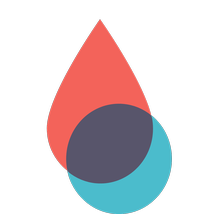Blood disorders biological samples & experimental services
What are blood disorders?
Blood disorders are conditions that affect the production of blood or its components, such as red blood cells, white blood cells, platelets, and plasma. Examples of blood disorders include anemia, leukemia, blood clots, and bleeding disorders like hemophilia. These conditions can lead to health problems such as fatigue, infections, and difficulty with blood clotting.
Research on blood disorders has made significant progress in recent years. There have been significant developments in the treatment of blood disorders, such as improved bone marrow and stem cell transplantation techniques, new drugs for cancer, and gene therapies for genetic blood disorders. Likewise, advances in technology and genomics have led to the development of improved diagnostic tools for blood disorders, such as high-throughput sequencing and imaging techniques.
What types of samples are used in blood disorder research?
In blood disorder research, several types of biological specimens are used to study the underlying mechanisms and diagnose the condition. The following are some of the most common types of samples used in blood disorder research:
Blood samples
Whole blood, plasma, and serum are the most common blood disorders samples used for research purposes. These samples can be used to measure levels of specific proteins, hormones, or markers associated with blood disorders.
Bone marrow samples
Bone marrow is the soft tissue inside bones where blood cells are produced. Bone marrow samples are collected for the diagnosis of blood disorders such as leukemia and lymphoma.
Peripheral blood stem cells
Peripheral blood stem cells are immature blood cells that can be harvested from a person's bloodstream and used for transplantation purposes.
Tissue samples
Tissue samples, such as biopsy specimens, can be used to study the effect of blood disorders on specific organs or tissues.
Saliva samples
Saliva samples can be used to study genetic changes associated with blood disorders.
These samples are collected through various methods, such as venipuncture, bone marrow aspiration, and biopsy procedures, and are analyzed in the laboratory to help diagnose and understand the underlying mechanisms of blood disorders.

Available types of blood diseases biological samples
- Tissues
- Fresh tissues
- Frozen tissues (OCT and FF)
- FFPE tissues
- Healthy tissues
- Blood derivatives
- Whole blood
- PBMC
- Plasma
- Serum
- Leukapheresis
- Biofluids
- Urine
- Stool/Feces
- Saliva
Types of Collections
- Retrospective: we can look into existing biobank collections
- Prospective: we can set up clinical collection specific to a given project
Experimental models used in blood disorder R&D
There are several experimental models used in blood disorder research and development, including:
Cell culture models: cell culture is a widely used experimental model in which cells are grown in a controlled environment outside the body. This allows for the study of the biology of blood cells, including their development and response to various treatments.
Animal models: in vivo models, such as mice and rats, are used to study the effects of blood disorders and to test new treatments. These models can be engineered to mimic specific blood disorders, such as hemophilia or sickle cell anemia.
Humanized mouse models: humanized mouse models involve transplanting human hematopoietic stem cells into mice to create a mouse with a human-like immune system. This model is used to study the interactions between the immune system and blood cells in the context of blood disorders.
These experimental models allow researchers to gain a deeper understanding of the underlying mechanisms of blood disorders and to develop and test new treatments.

Typical deliverables
- Feasibility of availability of samples or experimental services
- Regulatory aspects (transfer authorizations, export authorizations, ethics committee agreement)
- Contracting
- Samples shipment in appropriate conditions
- Clinical data or results
- Other services (i.e. Nucleic acid extraction, quality control)

Get started with your blood disorder research request
Please answer the fields below to be contacted by our team of scientists
Our team will handle your blood disorders related R&D outsourcing from the beginning to the end
Perform a feasibility study by looking for existing samples already in collections & ready to be transferred
Set up a clinical biological collection and preparing contracts with sources
Assist the material transfer from the source to the lab, including treatments, QA or shipping, as needed
Some examples of blood disorders
For example, anemia is a very common blood disorder, affecting a significant portion of the population. Sickle cell anemia, on the other hand, is a relatively rare blood disorder that primarily affects people of African descent. Leukemia is one of the most common cancers in children and young adults, while multiple myeloma is more common in older adults.